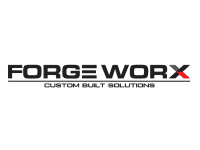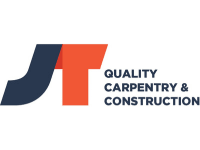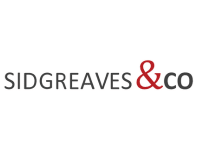In Australia’s fast-growing construction industry, a Bill of Quantities (BOQ) is crucial for effective project management, offering a foundation for budget alignment, project scope, and scheduling. As a Quantity Surveyor with over 30 years of industry expertise, I’ve seen how a precise BOQ transforms construction projects, ensuring cost efficiency and helping meet deadlines. This guide will walk you through the essentials of a BOQ, its role in project success, the responsibilities of Quantity Surveyors, and tips for maximizing the value of a well-prepared BOQ in Australia.
What is a Bill of Quantities (BOQ)?
The Bill of Quantities (BOQ) is a comprehensive document in the construction industry, listing all materials, labor, and other costs associated with a project. It functions as both a budgeting and tendering tool, essential for project management and financial planning. In Australia, BOQs adhere to the Australian Standard Method of Measurement (ASMM), ensuring accuracy and consistency across projects.
A well-prepared BOQ enables developers, contractors, and project managers to understand the project requirements from day one. This document defines the financial and logistical framework of a project, making it a valuable reference throughout the project lifecycle.
Key Components of a BOQ
A BOQ typically includes the following key elements:
- Description of Work: Every item in a BOQ is described clearly, ensuring that stakeholders understand the project’s scope and objectives.
- Quantities: Accurate measurements for each task provide clarity on the volume or amount needed, forming the basis for cost estimation.
- Unit Rates: Unit rates detail the cost to complete each unit of measurement, ensuring transparency in pricing and aiding cost control.
- Total Cost: The summation of labor, materials, and other expenses gives a comprehensive financial outlook for the project.
These elements work together to ensure the BOQ provides a full picture of the project’s requirements, enabling contractors to make accurate bids and clients to understand the project scope and budget.
Importance of BOQ in Construction
A BOQ isn’t just a list of quantities; it’s a strategic document that aligns project goals, budget, and timelines. Here’s why BOQs are indispensable in construction:
- Cost Control: With a precise BOQ, clients gain visibility into project costs, making it easier to control budgets and avoid cost overruns.
- Efficient Tendering: Standardized BOQs simplify the comparison of bids, allowing contractors to submit fair, competitive proposals.
- Enhanced Project Management: BOQs outline every component, enabling project managers to prioritize tasks and allocate resources efficiently.
- Risk Mitigation: A well-prepared BOQ highlights potential costs and resource needs early, minimizing unexpected issues.
- Clear Communication: With clear descriptions and itemizations, BOQs reduce misunderstandings and promote smooth coordination among stakeholders.
How to Obtain an Accurate BOQ for Your Australian Project
Achieving a precise BOQ involves several steps, each critical to the document’s reliability and usefulness. Here’s a structured approach:
- Project Review and Design Analysis: Review the project’s plans and specifications thoroughly to understand all requirements.
- Measurement in Compliance with ASMM: Use the Australian Standard Method of Measurement to ensure consistent and accurate quantification.
- Detailed Itemization: List each element in detail to avoid ambiguity and enhance cost tracking.
- Professional Consultation: Engage a qualified Quantity Surveyor, who can bring specialized knowledge to prepare an accurate BOQ tailored to your project needs.
What Does a Quantity Surveyor Do?
A Quantity Surveyor (QS) is integral to the BOQ process, ensuring projects stay on budget, meet quality standards, and adhere to deadlines. Here are some of the primary responsibilities of a QS:
- Client Consultation: Meeting with clients to define project goals and budgets.
- Feasibility Studies: Analyzing project proposals to ensure they are financially viable.
- Quantity Calculation: Measuring and calculating the materials, labor, and timelines for project completion.
- Tender Preparation: Preparing bills of quantities and other tender documents to establish project scopes.
- Risk Management: Implementing cost-control measures and advising on value engineering to maximize efficiency.
- Contract and Schedule Negotiation: Working with subcontractors to establish terms that benefit the client.
- Quality Assurance: Ensuring that each project phase meets regulatory and quality standards.
- Ongoing Project Evaluation: Regularly assessing progress and value to keep stakeholders informed.
- Dispute Resolution: Advising on contractual issues and providing support on claims or disputes.
A QS often balances office-based work with client meetings and site visits, adapting their approach based on each project’s unique needs.
Types of BOQs and When to Use Them
In Australia, BOQs can be customized to suit different project scales and requirements:
- Full BOQ: This detailed BOQ is typically used for large-scale commercial or residential projects with high budgets and multiple stakeholders.
- Abbreviated BOQ: A simplified BOQ used for smaller, low-density projects. This version is ideal for residential builds where time and budget constraints are key concerns.
- Specialist BOQ: Tailored for unique construction projects such as heritage restoration, sports venues, or retail fit-outs, which have distinct requirements.
Choosing the correct BOQ format can save time and resources while ensuring accurate cost control and project management.
Tips for Maximizing Your BOQ’s Impact
To get the most from your BOQ, consider these best practices:
- Engage a Quantity Surveyor Early: Early involvement of a QS provides a clearer picture of potential costs and risks.
- Tailor the BOQ to the Project Type: For complex, high-value projects, opt for a Full BOQ; for simpler projects, an Abbreviated BOQ may suffice.
- Ensure Precision in Measurement: Accurate measurements minimize discrepancies, saving time and money.
- Communicate Regularly with Stakeholders: Providing updates keeps everyone aligned and helps prevent issues from escalating.
- Regularly Review and Update the BOQ: Adjust the BOQ at major project milestones to reflect any changes in design, materials, or scope.
FAQs About BOQs in Australian Construction
How frequently should a BOQ be updated?
It’s advisable to review the BOQ after any design or scope changes, or at key project phases, to ensure it aligns with current requirements.
Can a BOQ be used for ongoing maintenance and repair projects?
Yes, BOQs are also valuable for estimating repair and maintenance costs, providing clarity on resource needs for existing or completed projects.
Do all Australian construction projects require a BOQ?
While not legally required, a BOQ is recommended for most projects as it ensures clear cost estimates and effective project planning.
How do I choose the right type of BOQ for my project?
Consulting with a Quantity Surveyor can help determine the best BOQ format based on project scale, budget, and complexity.
Key Takeaways
The Bill of Quantities (BOQ) is a fundamental tool for efficient project management in construction, setting the groundwork for accurate cost estimates, tendering, and scheduling. Whether you’re planning a residential development or a large commercial project, a well-prepared BOQ can guide every aspect of the build, from budgeting to quality control.
For expertly crafted BOQs that meet Australian standards and align with your project goals, contact Matrix Estimating today. Our experienced team is dedicated to delivering BOQs that ensure successful project outcomes, keeping timelines and budgets firmly in check.























